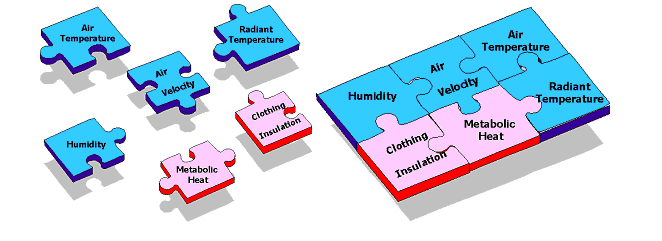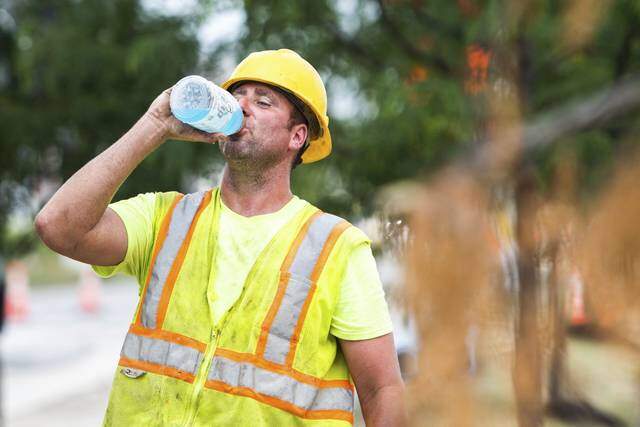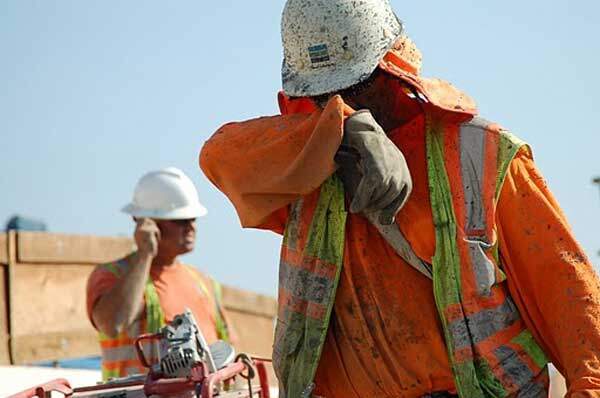Average daily temperatures could reach 40°C in some parts of the world, especially in the tropics. The most recent forecast indicates that the weather will be so hot in most of the UK and other countries, which has caused concern among individuals and especially among construction workers who carry out their work in open spaces.
Heat poses a major risk to the health and safety of workers conducting their duties because a sizable portion of the construction crew works outside. A recent tool station poll found that over half of the tradespeople are concerned about getting burned while working outside, and more than a fifth admit to forgoing sun protection when working on a project. There have been discussions about the legal obligations employers have to protect their workers from the effects of excessive heat.
What is the Maximum Temperature in the Workplace?
The Health and Safety Executive (HSE) states that there are no set regulatory requirements for the minimum or maximum temperature in the workplace. However, in order to safeguard workers, the Workplace (Health, Safety and Welfare) Regulations of 1992 mandate that firms maintain a “reasonable temperature.” However, the type of job being done and the surrounding factors at the workplace will determine whether the temperature is “appropriate.”
Minimum Workplace Temperature
According to the Approved Code of Practice, a workplace’s minimum temperature should typically be at least 16 degrees Celsius. When physically demanding labour is being done, the temperature should be at least 13 degrees Celsius. The employer has a responsibility to establish what will be an acceptable level of comfort in the specific circumstances; these temperatures are not absolute legal requirements.
Higher Temperatures at Work
Due to the high temperatures present in places like glass factories and foundries, for example, an accurate figure cannot be provided at the higher end of the scale. As long as the proper safeguards are in place, it is still possible to work safely in these conditions. Other factors, such as radiant temperature, humidity, and air velocity, become more important, and the relationship between them becomes more complex with rising temperatures.
What is Thermal Comfort and how is it Measured?
To determine whether the temperature that people are working in is appropriate, thermal comfort can be employed. It relates to a worker’s mental state, including whether they feel overheated, and takes into account a variety of environmental, occupational, and psychological aspects.
Thermal comfort is influenced by six environmental and individual factors. The thermal comfort of an employee is influenced by a number of factors, some of which may be independent of one another.
The environmental factors are:
- Air temperature
- Radiant temperature
- Air velocity
- Humidity
The Personal factors include:
- Clothing Insulation
- Metabolic heat

According to the HSE, “Thermal comfort is measured by the number of employees reporting of thermal discomfort, not by the temperature of the room.” According to the regulator, heat discomfort can have an impact on morale and productivity and put people’s health and safety in danger. For instance, persons who are working in uncomfortable heat are more likely to act unsafely since it impairs their judgment. The capacity of an individual to perform manual work can also decline.
How can Employers Safeguard Employees who are Outside?
Although companies have little control over the outdoor temperature, the HSE offers numerous suggestions for how they can safeguard workers. These consist of:
- Rescheduling the programme of work to accommodate cooler hours.
- Bringing shade to rest spots and scheduling more regular breaks.
- The addition of shade in areas where people are working.
- Providing free access to chilled water for drinking.
- Encouraging workers to remove personal protective equipment (PPE) while they are resting to aid in heat loss; and
- Instructing them on how to spot the early signs of heat exhaustion.
What is the Recommended PPE Usage in Scorching Heat?
Because of discomfort, workers may not properly use PPE in high temperatures, according to the HSE. Employers are urged to take this danger into account because it makes working on a construction site risky. In order to make employees more comfortable, managers can ensure that they are not wearing any more PPE than is necessary for their jobs.
Alternative uniform designs made of lighter materials can also be taken into account. Workers may find it useful to modify their work attire according to their personal comfort if it has numerous layers. The HSE advises using high-factor sunscreen with at least SPF 15 on exposed skin.
How should Workers Express Concerns?
According to the HSE, employees can discuss concerns with their manager, supervisor, or union representative. It states that companies should conduct a risk assessment and take appropriate action if a considerable number of workers express complaints about thermal discomfort.
According to the regulation, in addition to Workplace Regulations, employers must analyze the risks to their employees’ health and safety and take appropriate measures when necessary and when reasonably practical. One of the potential dangers that firms should address to comply with legal requirements is the temperature of the workplace. Employers should speak with staff members or their representatives to build practical coping mechanisms.
The employees are also free to do a variety of activities that will enhance their workplace’s thermal comfort. They comprise;
- Depending on how hot or chilly it is, add or remove layers of clothing.
- Utilize a desk or pedestal fan to improve airflow.
- If window coverings are available, use them to block the sun’s heating influence.
- Drink a lot of water in hot weather (avoid caffeinated or carbonated drinks)
- Work away from sources of radiant heat or direct sunshine if at all possible.
- Periodically pause to cool off in hot settings and warm up in cold ones.
- If possible, bring up the matter with your managers, your union, or other workplace officials.

Even though any of the aforementioned measures might help in some small way to lessen your thermal discomfort, there are a number of additional things that your manager or company could do to assist. Discuss the following with your manager, supervisor, union official, or employee representative:
- Introduce work systems to limit exposure, such as flexible hours or early/late starts to help avoid the worst effects of working in high Temperatures, by, whenever possible, ensuring windows are open, fans that promote local cooling, radiators that can be switched off or air conditioning units that are maintained.
- Easing up on formal attire
- Insulating hot equipment or pipes, relocating workstations out of direct sunlight or away from hot equipment, and include thermal Risk assessments in workplace risk assessments.
Given that thermal stress can have a detrimental effect on an employee’s health, employers should consider and pay attention to their employees’ worries and provide the necessary support.











I agree. Thanks for sharing